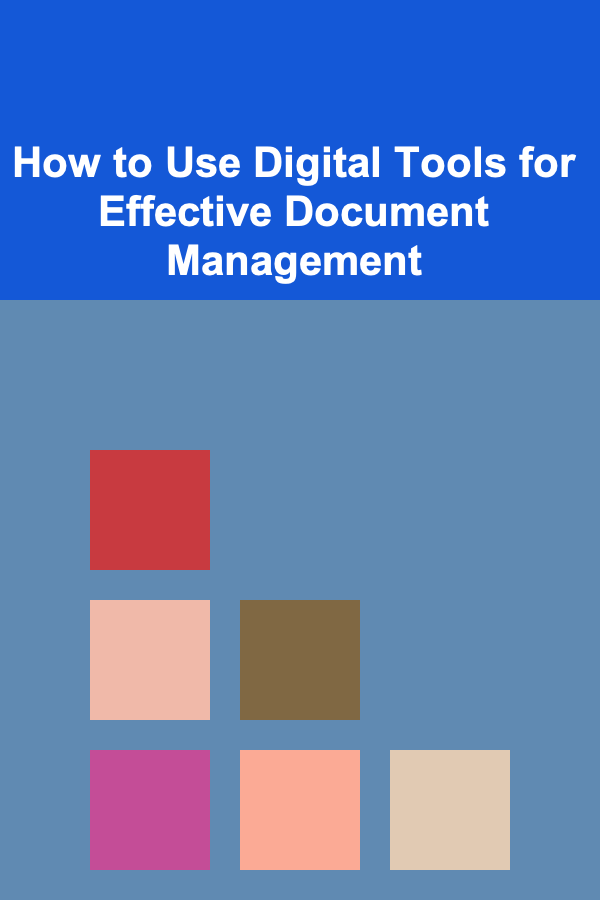
How to Build a Content Promotion Checklist for Paid Ads
ebook include PDF & Audio bundle (Micro Guide)
$12.99$8.99
Limited Time Offer! Order within the next:

Paid advertising is one of the most powerful ways to amplify your content, increase brand visibility, and drive conversions. However, with so many variables to consider, it can be easy to miss critical elements when setting up and executing your paid ads. To ensure your content promotion efforts are effective and efficient, a well-structured checklist can help guide you through each phase of the campaign.
In this article, we'll break down how to create a comprehensive content promotion checklist for paid ads that covers everything from the planning stages to post-launch analysis.
Define Your Objective and KPIs
Actionable Tip: Clarify Your Campaign's Goal
Before you launch any paid ad campaign, it's crucial to define your objectives. Ask yourself: What do I want to achieve with this campaign? Is it brand awareness, lead generation, website traffic, or sales?
Once your objective is clear, establish Key Performance Indicators (KPIs) to track the success of the campaign. Common KPIs for paid ad campaigns include:
- Click-through rate (CTR)
- Conversion rate
- Cost per acquisition (CPA)
- Return on ad spend (ROAS)
- Impressions and reach
By defining your objectives and KPIs, you can align your content promotion efforts with measurable outcomes that indicate success.
Understand Your Target Audience
Actionable Tip: Create Buyer Personas
Effective paid ads rely heavily on understanding your audience. Create detailed buyer personas that outline the characteristics of your ideal customers, including:
- Demographics (age, gender, location)
- Psychographics (interests, behaviors, values)
- Pain points and needs
- Purchasing habits
With buyer personas in mind, you can tailor your ad targeting to reach the right people with the right message. Platforms like Facebook, Google Ads, and LinkedIn offer advanced targeting options based on demographics, interests, and behaviors, allowing you to hone in on your ideal audience.
Actionable Tip: Segment Your Audience for Personalization
Consider segmenting your audience into different groups based on shared characteristics. This will allow you to create personalized ad copy that resonates with each segment, resulting in higher engagement and better conversion rates.
Choose the Right Paid Ad Platform
Actionable Tip: Evaluate Available Platforms
Different ad platforms serve different purposes, so it's important to choose the one that best fits your campaign's goals. Here are some key options:
- Google Ads: Ideal for targeting users actively searching for specific keywords related to your content.
- Facebook and Instagram Ads: Great for highly targeted audience segmentation and visual content promotion.
- LinkedIn Ads: Perfect for B2B content promotion and reaching professionals within specific industries.
- Twitter Ads: Effective for promoting timely or trending content, especially during events or campaigns.
Actionable Tip: Leverage Multi-Channel Strategies
Consider running ads across multiple platforms to increase the reach of your content. For example, you could run Google Ads to target searchers and Facebook Ads for social media awareness. A multi-channel strategy helps you reach users at different stages of the buyer journey.
Optimize Your Content for Ads
Actionable Tip: Align Content with Ad Objectives
The content you're promoting should be optimized for the specific goals of the ad campaign. If your goal is lead generation, create a landing page with a clear call-to-action (CTA) that encourages visitors to submit their contact information. For eCommerce, ensure your product pages are easy to navigate and optimized for conversions.
- Headlines: Craft attention-grabbing headlines that align with the user's search intent or interests.
- CTA: Your CTA should be concise, compelling, and action-oriented. Make sure it's visible and leads users to the next step.
- Visuals: Use high-quality images or videos that are engaging and relevant to the message you're promoting.
- Mobile Optimization: Since many users access ads via mobile devices, ensure your content is optimized for mobile viewing.
Actionable Tip: A/B Test Your Content
A/B testing allows you to compare two variations of your content to determine which one performs better. Test different headlines, CTAs, visuals, and even landing pages to optimize your paid ads for maximum effectiveness.
Set a Realistic Budget and Bidding Strategy
Actionable Tip: Determine Your Ad Spend
Set a realistic budget based on your campaign's goals and expected costs. A good rule of thumb is to allocate your budget according to the platforms that are most likely to generate the highest return on investment. For instance, if you're targeting a highly competitive keyword on Google Ads, expect to pay more per click, but you could potentially see higher-quality traffic.
Actionable Tip: Choose the Right Bidding Strategy
Paid platforms typically offer a range of bidding strategies, such as:
- Cost per click (CPC): Pay for each click your ad receives.
- Cost per thousand impressions (CPM): Pay for every 1,000 impressions your ad gets.
- Cost per acquisition (CPA): Pay when a user takes a specific action (e.g., making a purchase or signing up).
Select the bidding strategy that aligns with your campaign goals. For example, if you're focused on generating leads, CPA bidding might be more effective than CPC.
Monitor and Adjust Targeting Settings
Actionable Tip: Fine-Tune Audience Targeting
Once your ad campaign is live, continually monitor and adjust your targeting settings to improve performance. Paid ad platforms provide detailed analytics that can help you refine your targeting.
- Demographic Data: Review which age groups, genders, or locations are engaging most with your ads, and adjust your targeting accordingly.
- Device Performance: Check how ads perform across different devices (desktop vs. mobile) and consider adjusting bids or content accordingly.
- Interests and Behaviors: If you're using interest or behavior-based targeting, adjust based on the segments that perform best.
Track and Analyze Performance Metrics
Actionable Tip: Use Analytics Tools
Once the campaign is running, closely track your performance metrics to assess the effectiveness of your paid ads. Tools like Google Analytics, Facebook Ads Manager, and platform-specific dashboards can provide in-depth insights into user behavior, ad performance, and return on investment.
Focus on the KPIs you established at the beginning of the campaign and adjust accordingly. For example, if you're not getting the desired number of conversions, analyze the user journey and optimize your landing pages or CTA.
Actionable Tip: Make Data-Driven Adjustments
Based on the performance data, make necessary adjustments to your ad copy, targeting, bidding strategy, or budget. Continuous optimization is key to improving your return on ad spend (ROAS).
Refine and Scale Your Campaign
Actionable Tip: Test New Ad Variations
Once you have gathered enough data, test new variations of your ad to continue improving performance. Test different messaging, visuals, and audience segments to find the most effective combinations. Scaling successful campaigns can help you reach a larger audience without compromising on ad quality or performance.
Actionable Tip: Increase Budget Gradually
When scaling, it's important to gradually increase your ad spend. A sudden increase in budget may cause fluctuations in performance due to changes in the ad auction system. Instead, scale your budget slowly while monitoring performance metrics closely.
Conclusion
Building a content promotion checklist for paid ads is a strategic approach that ensures you don't miss any critical steps in your campaign. By defining your objectives, understanding your audience, choosing the right platforms, and optimizing your content, you'll be better positioned to drive meaningful results. With continuous monitoring, testing, and adjustments, your paid ad campaigns will become more effective over time, maximizing your content's reach and ROI.

How to Clean and Care for Your Upholstery
Read More
How To Find Free Educational Resources
Read More
How to Organize Your Dining Room for Entertaining
Read More
How to Pack for a Digital Detox Vacation: A Checklist for Disconnecting
Read More
How to Stage Your Home to Attract Millennial Buyers
Read More
How to Use Digital Tools for Effective Document Management
Read MoreOther Products

How to Clean and Care for Your Upholstery
Read More
How To Find Free Educational Resources
Read More
How to Organize Your Dining Room for Entertaining
Read More
How to Pack for a Digital Detox Vacation: A Checklist for Disconnecting
Read More
How to Stage Your Home to Attract Millennial Buyers
Read More